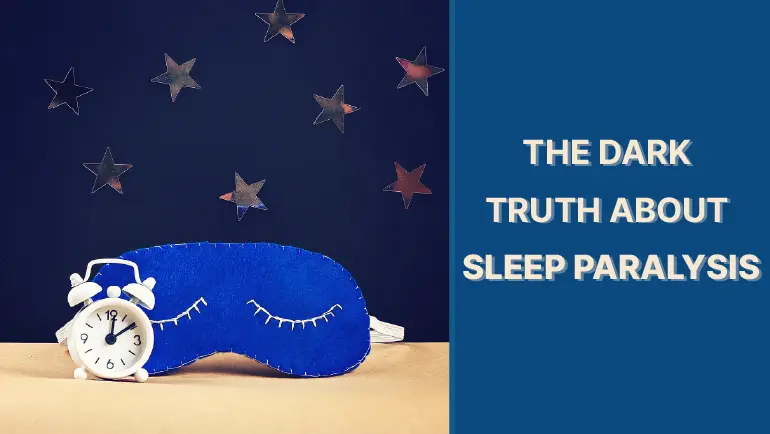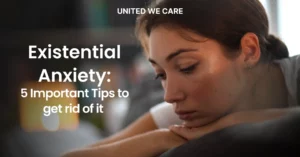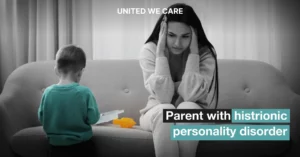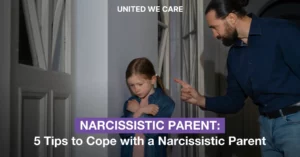Introduction
Sleep paralysis is a condition where an individual feels unable to move or speak for a period of time, this condition can be experienced during the waking up or falling asleep. When an individual experience sleep paralysis at that moment individual’s are aware of what’s happening but they are unable to move. Some individual experience intense fear or a sensation of fear or can also experience hallucinations.
What is Sleep Paralysis?
Sleep paralysis is a condition that occurs when you are in the process of waking up or falling asleep. It can make you feel like you’re unable to move or speak for a period, even though you are aware of what’s happening. During sleep paralysis, your brain is awake. Your body experiences temporary muscle paralysis to prevent you from acting out your dreams. This sensation can leave you feeling stuck and without control over your muscles. Some individuals may also have hallucinations, experience a sensation in their chest, and intense fear.
How Long Do Episodes of Sleep Paralysis Typically Last?
Sleep paralysis usually lasts for a moment to a couple of minutes before resolving on its own. It is often linked to sleep disorders, stress, and not getting sleep.
While the exact cause of sleep paralysis is not completely understood, it seems to be connected to disruptions in the cycle of sleeping and waking up during the rapid eye movement (REM) sleep stage. Despite being an experience, sleep paralysis is relatively common. It is not considered a medical emergency.
Sleep Paralysis Typically Occurs In Two Distinct Moments[3].
There are generally two moments when sleep paralysis occurs. The first is known as preorbital sleep paralysis, which happens when falling asleep. The second is called postdormital sleep paralysis, which occurs during the process of waking up from sleep.
By understanding when these episodes of sleep paralysis happen, individuals can recognize the situations in which they may occur and gain insights into their sleeping patterns.
Symptoms of Sleep Paralysis
Sleep paralysis can come with different symptoms like [4]:
- Inability to move: During sleep paralysis, individuals experience a temporary inability to move their bodies voluntarily, despite being conscious and aware of their surroundings.
- The feeling of being paralyzed: There is a sensation of muscle weakness or paralysis, making it challenging to speak, move limbs, or perform voluntary actions.
- Hallucinations: Many individuals with sleep paralysis report vivid hallucinations, which can be visual, auditory, or tactile. These hallucinations may involve seeing shadowy figures, hearing strange sounds, or feeling pressure or touch sensations on the body.
- Intense fear or anxiety: During sleep paralysis, you may experience intense fear and anxiety, often accompanied by a strong sense of panic or impending doom. This emotional distress can be overwhelming and contribute to the overall intensity of the experience.
- Breathing difficulties: Some individuals may feel a sense of pressure or restriction on their chest, making it challenging to breathe normally. This sensation can lead to further anxiety during the episode.
It’s important to note that the specific symptoms of sleep paralysis can vary among individuals, and not everyone will experience all of these symptoms.
Causes of Sleep Paralysis
Sleep paralysis can manifest with symptoms such as [4];
- Irregular sleep patterns or lack of sleep: If you have disruptions in your sleep schedule or do not get sleep, you may contribute to experience sleep paralysis.
- Medications and substances: If you use certain medications, like antidepressants or substances such as alcohol, it can potentially increase the risk of having episodes of sleep paralysis.
- Underlying sleep disorders: If you face conditions like narcolepsy, which involve sleepiness. Sometimes, we have sudden loss of muscle control, which has been associated with instances of sleep paralysis.
- Family history: Do you know, if anyone from your family having Sleep paralysis? It might have a component since it has been observed to run in families.
- Stress and anxiety: levels of stress and anxiety can trigger episodes of sleep paralysis.
- Other factors: Environmental factors like sleeping position or surroundings could also play a role in the occurrence of sleep paralysis.
It’s important to note that the specific symptoms experienced during sleep paralysis can vary among individuals. Not everyone will experience all these symptoms.
Treatment of Sleep Paralysis
When it comes to the treatment of sleep paralysis, there is no specific cure. However, certain strategies can help manage and reduce the frequency of episodes. Here are some non-pharmacological approaches[5]:
- Improving sleep hygiene: Establishing a consistent sleep schedule, creating a relaxing sleep environment, and practicing good sleep habits can promote better sleep quality.
- Stress management: Engaging in stress-reducing activities like meditation, deep breathing exercises, or practicing relaxation techniques can help minimize anxiety and potentially prevent sleep paralysis.
- Sleep position adjustment: Changing sleep positions, particularly avoiding sleeping on your back, may decrease the likelihood of experiencing sleep paralysis episodes.
- Addressing underlying sleep disorders: If sleep paralysis is associated with an underlying sleep disorder like narcolepsy, seeking treatment for the primary condition can potentially alleviate symptoms.
- Seeking support: Talking to a healthcare professional or a sleep specialist can provide valuable guidance, reassurance, and additional strategies to manage sleep paralysis.
How to Overcome Sleep Paralysis
- Education and Awareness: Learn about sleep paralysis to understand its causes and realize that it is a natural phenomenon with no serious underlying health issues.
- Sleep hygiene practices: Maintain a consistent sleep schedule, create a comfortable sleep environment, and establish a relaxing bedtime routine to promote better sleep quality.
- Stress reduction techniques: Practice stress management techniques such as meditation, deep breathing exercises, or calming activities before bedtime to minimize anxiety and stress that can contribute to sleep paralysis.
- Adjust sleep positions: Experiment with different roles, especially avoiding sleeping on your back, as it may reduce the likelihood of experiencing sleep paralysis.
- Healthy lifestyle choices: Adopt a healthy lifestyle that includes regular exercise, a balanced diet, and avoiding substances like alcohol or drugs that can disrupt sleep patterns.
- Seeking support: Connect with others who have experienced sleep paralysis to share experiences, gain support, and exchange coping strategies.
- Consultation with a healthcare professional: If sleep paralysis episodes are frequent, significantly distressing, or accompanied by other sleep disorders, seeking medical advice is recommended.
Conclusion
Sleep paralysis is a condition that occurs when there is a disconnect between the mind and body during the sleep cycle. While some people may only experience it occasionally, those with sleep disorders might be more prone to it. Although there is no treatment, for sleep paralysis understanding the condition and adopting sleep habits can help reduce the likelihood of episodes and associated distress. If you or someone you are acquainted with experiences sleep paralysis or encounters symptoms, it might be beneficial to consult a medical professional to exclude any potential underlying sleep disorders.
If you’re seeking information and resources related to sleep, you can explore the UWC website. They offer a variety of materials and the chance to engage with experts who can assist in addressing your sleep concerns.
References
[1]Sleep paralysis. 2017.
[2]“Isolated sleep paralysis,” Mount Sinai Health System. [Online]. Available: https://www.mountsinai.org/health-library/diseases-conditions/isolated-sleep-paralysis. [Accessed: 25-May-2023].
[3]A. Packard, “Is sleep paralysis a sign of something more serious?” J. Sleep Disord. Ther., vol. 10, no. 11, pp. 1–1, 2021.
[4]R. Pelayo and K. Yuen, “Sleep Paralysis,” in Encyclopedia of the Neurological Sciences, Elsevier, 2003, p. 307.
[5]K. O’Connell, “Sleep paralysis,” Healthline, 28-Jul-2020. [Online]. Available: https://www.healthline.com/health/sleep/isolated-sleep-paralysis. [Accessed: 25-May-2023].










